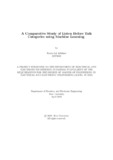| dc.contributor.advisor | Sabuj, Saifur Rahman | |
| dc.contributor.advisor | Bhuian, Mohammed Belal Hossain | |
| dc.contributor.author | Adhikari, Rudra Lal | |
| dc.date.accessioned | 2023-09-19T04:00:54Z | |
| dc.date.available | 2023-09-19T04:00:54Z | |
| dc.date.copyright | 2023 | |
| dc.date.issued | 2023-04 | |
| dc.identifier.other | ID 22271003 | |
| dc.identifier.uri | http://hdl.handle.net/10361/20991 | |
| dc.description | This project report is submitted in partial fulfilment of the requirements for the degree of Master of Science in Electrical and Electronic Engineering, 2023. | en_US |
| dc.description | Cataloged from PDF version of the project report. | |
| dc.description | Includes bibliographical references (pages 60-82). | |
| dc.description.abstract | The cellular industry is seeking solutions to efficiently utilize the available spectrum
band due to the rapid growth of wireless traffic and technological advancements.
One potential solution that has gained attention is implementing Long Term Evolution (LTE) with unlicensed spectrum (LTE-U) using a Listen before Talk (LBT)
approach, as prescribed by international regulators. To ensure fair channel access
for co-located networks, it is crucial to establish a coexistence strategy that incorporates expected traffic requirements for both present and future needs. Machine
learning has been recognized for its ability to automate critical wireless communication network activities, gather data from multiple sources, and employ various
algorithms. Thus, this project emphasizes the significance of researching LTE and
Wi-Fi coexistence in unlicensed spectrum using machine learning. It provides an
overview of existing LTE-U and Wi-Fi technologies, and reviews the studies that
have been conducted on their coexistence. The project also discusses LBT mechanisms and their categories as defined by the 3GPP standard, as well as previous
research conducted in various categories, providing a basis for future research. The
study evaluates the performance of each priority class of LBT Cat 4 using the Jains
Fairness with machine learning approach to determine the best coexistence priority
class of LBT Cat 4 that will enhance future network performance when coexisting
with Wi-Fi. Thus in wireless communication systems, machine learning can be used
to optimize the LBT protocol by learning the patterns and characteristics of the
communication channel. By training the large amounts of data collected from the
communication channel, the network can learn to predict when the channel will be
free and when it will be busy. This can help to reduce the waiting time for devices
and increase the efficiency of the communication system. Moreover it help us to
understand the channel sharing fairness and signal detection probability better for
each of the priority class of LBT Cat4. | en_US |
| dc.description.statementofresponsibility | Rudra Lal Adhikari | |
| dc.format.extent | 82 pages | |
| dc.language.iso | en | en_US |
| dc.publisher | Brac University | en_US |
| dc.rights | Brac University project reports are protected by copyright. They may be viewed from this source for any purpose, but reproduction or distribution in any format is prohibited without written permission. | |
| dc.subject | Listen Before Talk | en_US |
| dc.subject | 5G NR | en_US |
| dc.subject | LTE-LAA | en_US |
| dc.subject | Jains Fairness index | en_US |
| dc.subject | Receiver operating character | en_US |
| dc.subject.lcsh | Machine learning | |
| dc.title | A comparative study of listen before talk categories using machine learning | en_US |
| dc.type | Project report | en_US |
| dc.contributor.department | Department of Electrical and Electronic Engineering, BRAC University | |
| dc.description.degree | M. Electrical and Electronic Engineering | |

